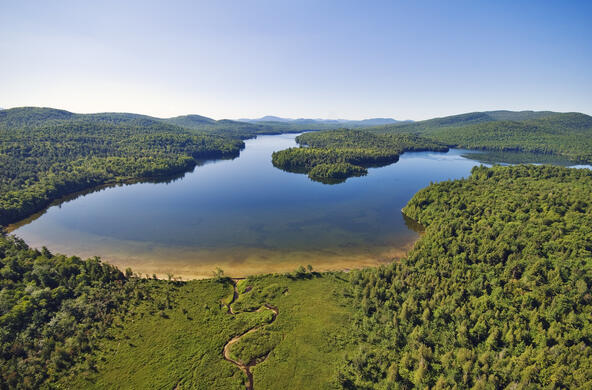The concept of household water use is fairly easy to grasp—total water use is measured by the municipal water company and per capita water use is calculated by dividing by the number of household inhabitants. Certainly one could do the same for a house supplied by well water. Similarly, for a large metropolitan area, the municipal water plant could calculate how much water is supplied to the entire system and divide by the number of inhabitants in the city. These measurements would apply to water that is used to drink, bathe, wash clothes and dishes, and water the lawn and garden.
Hidden behind these obvious uses of water are uses that we do not easily see. These would include the water that is used to grow our food, especially any beef and other meat products that we consume. This water is often used far from where we live, seldom measured, and almost never included in the per capita water use for a household. For instance, it takes about 1,800 gallons of water to produce the 16-ounce beefsteak that we might enjoy for dinner. Worldwide, the consumption of water is dominated by agriculture.
Water is used when hydraulic fracture technology is used to produce oil and gas. Water is also used during the generation of electricity, especially using nuclear power, accounting for 45% of all water use in the United States in 2010. Water is used in most mining operations, for coal, iron ore, and other metals.
The water used to produce food, energy, and other consumer products is known as indirect or embedded water—it is contained in the product, even if we don’t see it. In a recent analysis for the United States, embedded water exceeded the direct use of water in 74 metropolitan areas. Taken together, the average U.S. citizen uses 4,490 gallons (17,000 liters) of water each day. While we have achieved increasing efficiencies in water use in recent decades, water consumption increases as a direct function of consumption patterns worldwide.
Twenty years ago, an estimate of direct and indirect consumption of water by humans accounted for 54 percent of freshwater runoff that it easily accessible at the Earth’s surface. As population has increased in the intervening years, it is of no surprise that water consumption has increased as well.
A recent global analysis suggests that we are now consuming—directly and indirectly—about 65 percent of the water resources of the planet. In some areas the entire flow of rivers is diverted to human use. In other areas, groundwater levels are dropping, indicating an unsustainable level of use.
When we are asked to conserve water, we immediately think of its obvious uses at home. It is easy to stop watering the lawn and to wash clothes and dishes more judiciously. But these actions overlook the fact that our largest use is found in embedded water in consumed products and energy.
Throughout human history, the availability of water has determined patterns of human settlements and the success of human endeavor. I suspect the same will apply in the future as we get closer and closer to using all of the freshwater that the Earth can supply us.
References
Chini, C.M., M. Konar, and A.S. Stillwell. 2017. Direct and indirect urban water footprints of the United States. Water Resources Research doi: 10.1002/2016WR019473
Eshel, G., A. Shepon, T. Markov, and R. Milo. 2014. Land, irrigation water, greenhouse gas, and reactive nitrogen burdens of meat, eggs, and dairy production in the United States. Proceedings of the National Academy of Sciences, US 111: 11996-12001.
Hoekstra, A.Y. and A.K. Chapagain. 2007. Water footprints of nations: Water use by people as a function of their consumption patterns. Water Resource Management 21: 35-48.
Hoekstra, A.Y. and M.M. Mekonnen. 2012. The water footprint of humanity. Proceedings of the National Academy of Sciences 109: 3232-3237
Maupin, M.A., Kenny, J.F., Hutson, S.S., Lovelace, J.K., Barber, N.L., and Linsey, K.S., 2014, Estimated use of water in the United States in 2010: U.S. Geological Survey Circular 1405, 56 p., http://dx.doi.org/10.3133/cir1405
Meldrum, J., S. Nettles-Anderson, G. Heath, and J. Macknick. 2013. Life cycle water use for electricity generation: A re view and harmonization of literature estimates. Environmental Research Letters stacks.iop.org/ERL/8/015031
Postel, S.L., G.C. Daily, and P.R. Ehrlich. 1996. Human appropriation of renewable fresh water. Science 271: 785-788.
Rockstrom, J., and 28 others. 2009. A safe operating space for humanity. Nature 461: 472-475.
Salzman, J. 2012. Drinking Water: A history. Overlook Press.
Vorosmarty, C.J., P. Green, J. Salisbury, and R.B. Lambers. 2000. Global water resources: Vulnerability from climate change and population growth. Science 289: 284-288.







